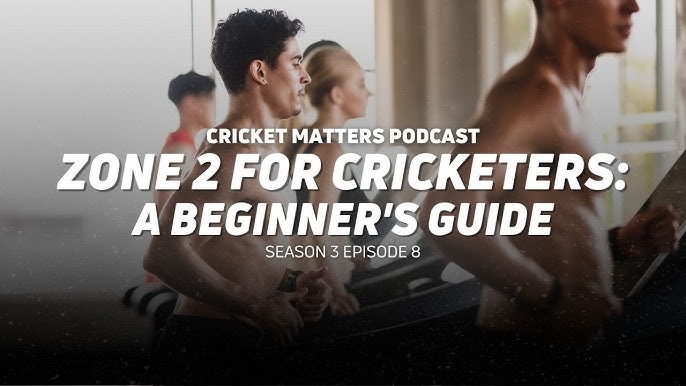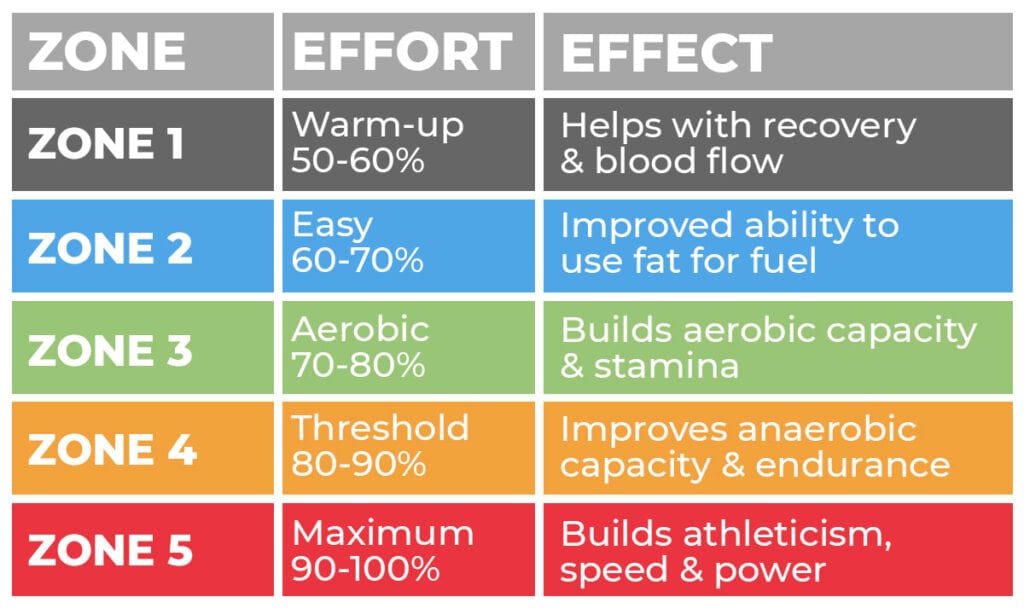Zone 2 Training for Cricketers: A Beginner’s Guide

Cricket isn’t just about skill with the bat or ball — it’s a game of endurance, recovery, and mental sharpness. Whether you’re spending a full day in the field, bowling long spells, or standing at the crease for hours, your fitness plays a massive role in how well you perform. And while many players focus on sprints, nets, and weight training, there’s one underrated form of cardio that can transform your overall game: Zone 2 training.
Zone 2 might sound like a technical fitness term, but it’s actually a simple and powerful tool that cricketers at every level can benefit from. If you’re new to the concept or wondering how to integrate it into your training routine, this guide will walk you through everything you need to know — from the basics to the science, the benefits, and how to put it into action.
What is Zone 2 Training?
Before we jump into why Zone 2 matters for cricket, let’s talk about what it actually is.
Zone 2 refers to a specific range of heart rate during aerobic exercise. It’s often described as low to moderate-intensity cardio, where you’re working out at 60–70% of your maximum heart rate (MHR). At this intensity, you should still be able to hold a conversation without gasping for breath. It feels easy, but make no mistake — this is where the magic happens.
Here’s a simple breakdown of the heart rate zones:
| Zone | Heart Rate % of Max | Intensity | Feels Like |
|---|---|---|---|
| 1 | 50–60% | Very light | Warm-up pace, easy breathing |
| 2 | 60–70% | Light (Zone 2) | Comfortable, steady pace |
| 3 | 70–80% | Moderate | Starting to sweat, breathing harder |
| 4 | 80–90% | Hard | Heavy breathing, short bursts |
| 5 | 90–100% | Max effort | Sprint-level intensity |
In Zone 2, your body relies heavily on fat as its primary fuel source and becomes more efficient at producing energy over long durations. It may not leave you drenched in sweat or gasping for air, but it builds the kind of deep cardiovascular fitness that supports every other part of your cricket training.
Why Cricketers Need Zone 2 Training

Cricket is a unique sport. Matches last for hours — sometimes days — and require repeated short bursts of intense activity mixed with long periods of steady focus and endurance. For this reason, both your aerobic and anaerobic systems need to be well-developed.
Here’s how Zone 2 cardio helps cricketers across the board:
1. Builds Long-Lasting Stamina
Zone 2 training strengthens the aerobic energy system, which helps your body use oxygen more efficiently. This translates to better stamina on the field, especially in longer formats like ODIs and Tests. You’ll tire less easily and stay sharp longer, whether you’re bowling long spells or batting through a full session.
2. Speeds Up Recovery Time
Ever feel wiped out after a match and struggle to recover before your next session? A strong aerobic base allows your body to remove waste products (like lactic acid) more efficiently, reducing soreness and helping you bounce back faster after games or hard training sessions.
3. Boosts Mental Focus and Consistency
Mental sharpness is just as important as physical fitness in cricket. Fatigue leads to mistakes — missed catches, sloppy bowling, poor shot selection. Zone 2 training enhances blood flow to the brain and improves your ability to stay focused under pressure for longer stretches.
4. Helps Maintain Weight and Improve Body Composition
Because Zone 2 relies heavily on fat as fuel, it can help with fat loss or maintaining a lean physique without burning muscle. This is ideal for cricketers who want to stay agile without compromising strength or speed.
5. Reduces Injury Risk
Unlike high-intensity training, Zone 2 workouts are low-impact. That means less stress on your joints and muscles, making it a safe way to improve endurance during recovery weeks or the off-season.
How to Find Your Zone 2 Heart Rate

Finding your Zone 2 range is pretty straightforward. Here’s how to do it:
Step 1: Estimate Your Maximum Heart Rate (MHR)
Use the basic formula:
220 – your age = Max Heart Rate
For example, if you’re 20 years old:
- 220 – 20 = 200 bpm (beats per minute)
Step 2: Calculate Your Zone 2 Range (60–70% of MHR)
- 60% of 200 = 120 bpm
- 70% of 200 = 140 bpm
So, your Zone 2 range is 120–140 bpm
Pro Tip:
Use a heart rate monitor or smartwatch to track your pulse during workouts and make sure you’re staying within that zone. If you don’t have one, just follow the “talk test”: You should be able to speak in full sentences without gasping.
Best Types of Zone 2 Workouts for Cricketers
You don’t need fancy equipment or a gym membership to do Zone 2 training. You just need a consistent, steady pace of movement. Here are a few great options:
- Slow jogging or treadmill runs
- Cycling (outdoors or on a stationary bike)
- Brisk walking (especially uphill)
- Swimming laps at an easy pace
- Elliptical trainer sessions
- Rowing machine
- Jump rope (at low intensity)
How Often Should You Train in Zone 2?

It depends on your goals and the time of the year. Here’s a simple breakdown for cricketers:
Pre-Season (Build Phase):
- 3–4 Zone 2 sessions per week
- Duration: 45–90 minutes each
- Focus: Build aerobic base before matches begin
In-Season (Maintenance Phase):
- 1–2 sessions per week
- Duration: 30–60 minutes
- Focus: Maintain endurance and aid recovery without fatigue
Post-Match Recovery Days:
- Light Zone 2 workouts help flush out soreness, improve circulation, and get you ready for the next session.
How to Combine Zone 2 with Cricket Skills & Strength Training
Don’t worry — you won’t have to give up nets, strength training, or speed drills to do Zone 2. You just need to balance them.
Weekly Training Example:
| Day | Training Focus |
|---|---|
| Monday | Strength + Light Skills |
| Tuesday | Zone 2 (60 mins jog or bike) |
| Wednesday | High-Intensity Nets or Match |
| Thursday | Recovery Day (Zone 2 walk) |
| Friday | Sprint Intervals + Strength |
| Saturday | Cricket Skills + Zone 2 Combo |
| Sunday | Rest or Light Zone 2 |
Zone 2 is great on low-energy days or when you want to stay active without exhausting yourself.
Advanced Tips for Cricketers Doing Zone 2 Training
If you’re already comfortable with basic Zone 2 workouts, here are some ways to take it to the next level:
1. Try Fasted Cardio
Doing Zone 2 workouts in a fasted state (like first thing in the morning) may help your body become more efficient at using fat for fuel. This can be beneficial for long-match energy stability.
2. Track Your Progress
Use an app or watch to monitor your average heart rate, pace, and distance. Over time, you should see yourself going faster at the same heart rate — that’s real fitness gain!
3. Add Polarized Training
Use the 80/20 rule: 80% of your cardio sessions should be low-intensity (Zone 2), and 20% high-intensity. This balance optimizes performance while minimizing burnout.
4. Periodize Your Cardio
Just like your cricket practice, cardio should follow a structured plan. Ramp up Zone 2 during the off-season and reduce volume as the season starts, focusing more on skill work.
Frequently Asked Questions
Q: Is Zone 2 training boring?
Not at all! You can listen to podcasts, watch TV on a stationary bike, or do it outside in nature. It’s also incredibly meditative and great for mental clarity.
Q: Can I overdo Zone 2 training?
Yes — doing too much without balancing with strength and explosive work could limit performance. Aim for 2–4 sessions a week, depending on your season phase.
Q: What if my heart rate goes above Zone 2 during the session?
That’s okay occasionally. Just slow down until your heart rate returns to the right range. It takes practice to find and stay in the sweet spot.
Q: Is Zone 2 better than HIIT for cricket?
Both have value. HIIT builds explosive power and speed, while Zone 2 develops endurance and recovery. A well-rounded program should include both.
Q: Do I need to be fit already to start Zone 2?
Not at all. Zone 2 is perfect for beginners. It’s low impact and builds fitness safely over time.
Final Thoughts: Why Zone 2 Belongs in Every Cricketer’s Training Plan
Zone 2 training may not be flashy or intense, but it’s one of the most effective and underrated tools for boosting your cricket performance. Whether you’re trying to improve stamina, recover faster, stay mentally sharp, or build a long-lasting aerobic base — Zone 2 is your secret weapon.
It’s easy to start, safe to do regularly, and fits perfectly alongside nets, gym sessions, and match play. Plus, it can help extend your playing career by reducing fatigue and injury risk.
So, the next time you’re planning your weekly training, don’t skip your Zone 2 session. It might just be the missing piece that takes your cricket game to the next level.
Ready to start? Grab your heart rate monitor, lace up those shoes, and take the first step toward becoming a fitter, more consistent cricketer — one Zone 2 session at a time.

